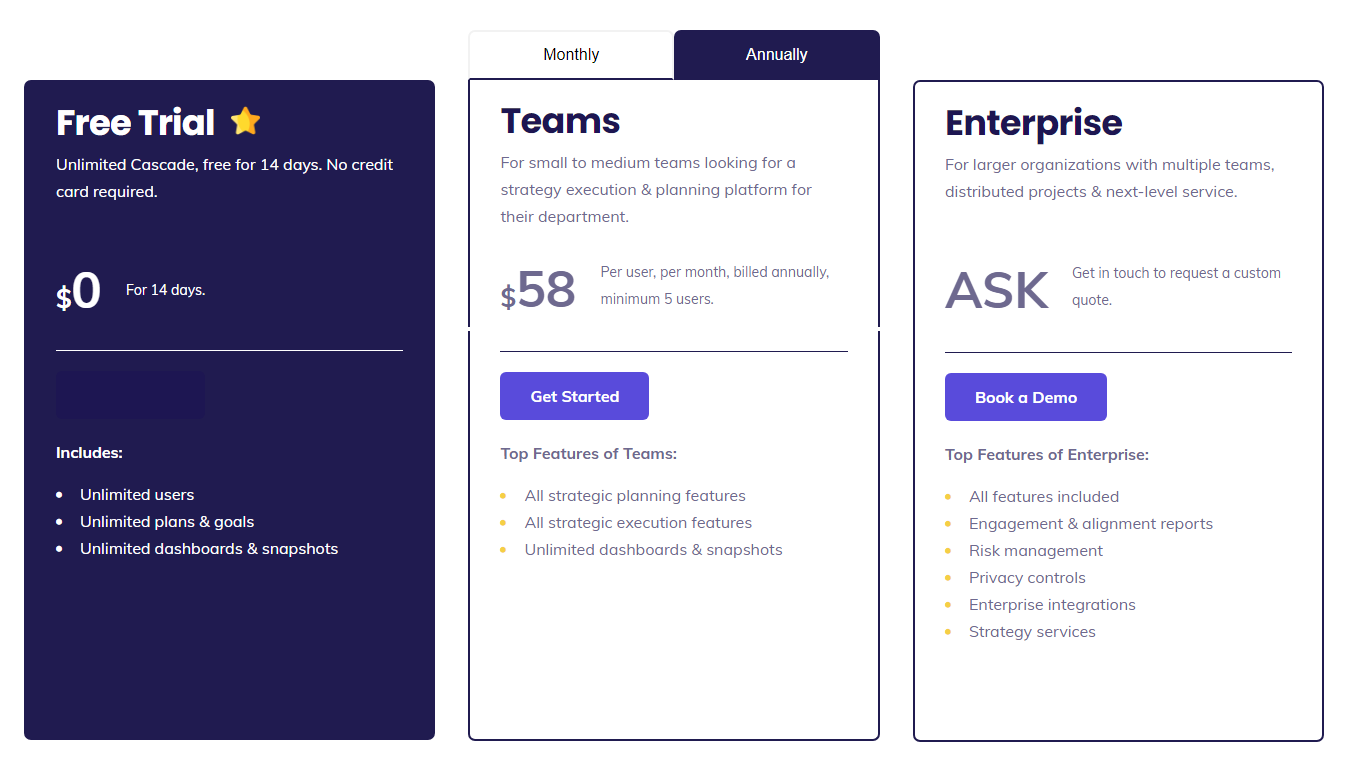This Cascade pricing section is effective because of the following reasons:
- Clear Hierarchy and Visual Appeal:
- Headline and Value Proposition: “Free Trial” immediately grabs attention and highlights a risk-free way to explore the product. The star symbol adds a touch of visual interest.
- Toggle: The “Monthly/Annually” toggle (though inactive in this image) is a user-friendly feature for comparing billing options.
- Tiered Structure: Three distinct tiers (Free Trial, Teams, Enterprise) are clearly displayed with visual separation.
- Pricing Clarity: The pricing for the “Teams” tier is prominently displayed. The “ASK” for the Enterprise tier implies custom pricing, suitable for that segment.
- Call to Action: “Get Started” and “Book a Demo” buttons are clearly visible and encourage user engagement.
- Layout: The layout is clean, organized, and easy to scan.
- Value-Based Differentiation:
- Target Audience: Each tier description clearly defines the target customer (e.g., “small to medium teams,” “larger organizations”).
- Feature List: The features listed within each tier showcase the added value as you move up the tiers. The use of “Top Features” is a concise way to highlight key benefits.
- Transparent Pricing (Partially):
- Free Trial: The Free Trial tier is clearly marked with “$0 for 14 days,” and the “no credit card required” message lowers the barrier to entry.
- Teams Tier: The pricing for the Teams tier is clearly displayed, including the minimum user count.
- Enterprise Tier: While the price isn’t listed, the “ASK” and “Book a Demo” CTA encourage users to contact sales, which is typical for enterprise-level pricing.
- Addressing Different User Needs:
- Tier Names: The names suggest different levels of service and functionality.
- Target Audience Descriptions: The descriptions explicitly target different customer segments.
- Strategic Use of Information:
- Call to Action: The prominent CTAs drive conversions.
- Highlighting Key Features: The listed features focus on the most important aspects of each tier.
- Concise Messaging: The descriptions and feature lists are brief and to the point.
- Focus on Benefits: The messaging focuses on the value users will receive, such as strategic planning, execution, and advanced features.



